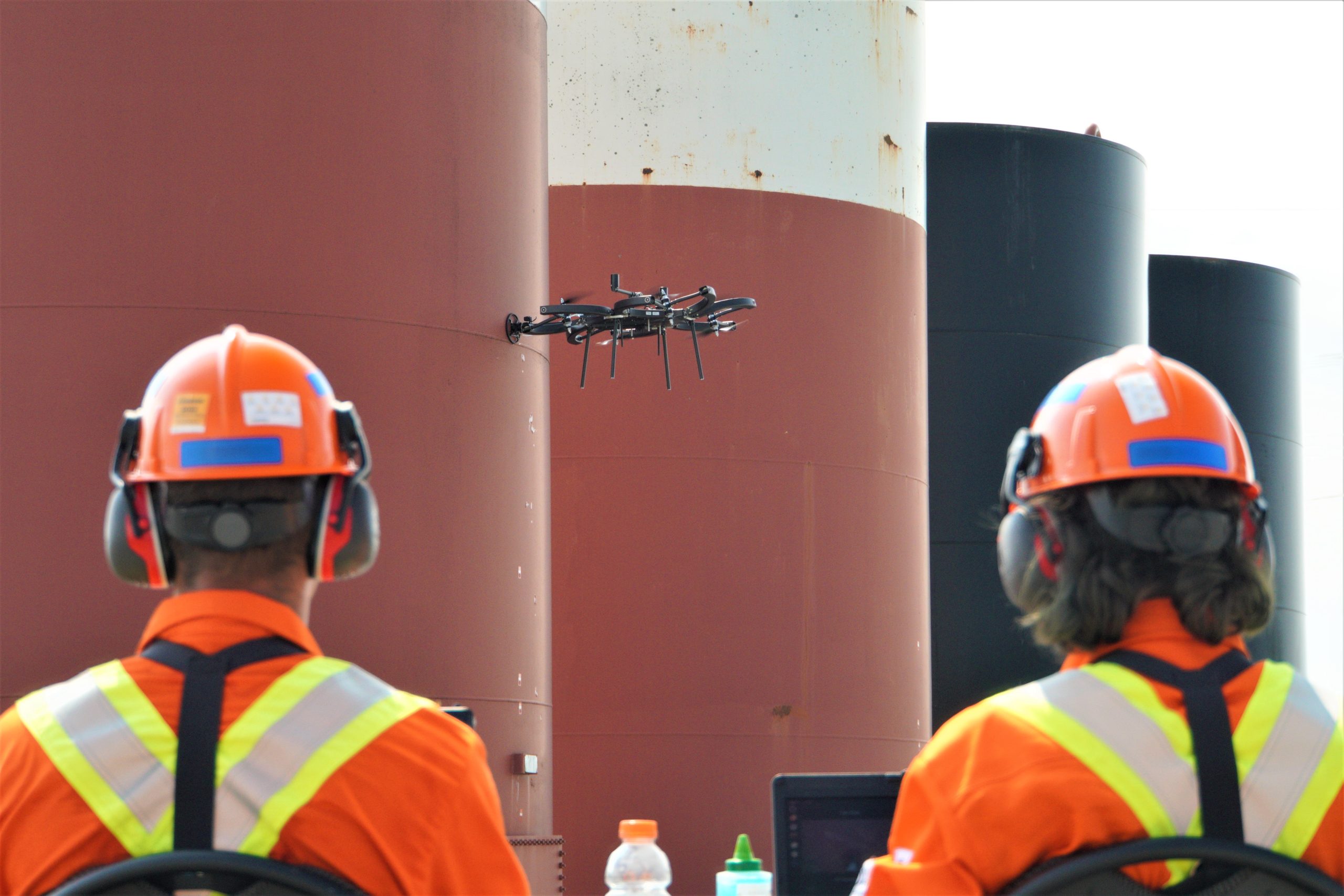Safer Vertical Inspections

Vertical inspections have historically been challenging. The natural landscape of such tasks is fraught with potential dangers, both for inspectors and others in the area.
Thankfully, advancing technology and the evolution of robotics are pushing boundaries, creating not only safer solutions, but far more efficiency in inspections and data collection.
Autonomous and Semi-Autonomous Technology Reduce Risk & Increase Performance
The key to risk reduction is to automate as much of the vertical inspection process as possible. Working at height comes with inherent dangers, including:
- Rope suspension.
- Climbing scaffolding.
- Entering confined spaces.
Plus, doing so whilst operating complex machinery.
Not only does this present risks to the inspector, but also to other personnel in the area, should anything be dropped and fall to the ground. Tasks, such as erecting scaffolding or using breathing apparatus to enter non-oxygen atmospheres, also come with their own risks.
Using robotic technology instead of hands-on human inspectors creates a safer and more efficient inspection process.
Semi-autonomous tools, such as VETOL – a pipe inspection crawler that uses fibre-optic tech to gather data – and Zenith, a 4K vertical inspection camera, have a massive impact on safety and inspection quality.
Drones, or unmanned aerial vehicles (UAVs) are also playing a key role, bringing viable solutions to both interior and exterior vertical inspection challenges.
Crawlers, inspection cameras and UAVs have been around for many years. However, it’s only recently that technology has advanced enough to make them truly user-friendly. A drone with only a few minutes run time or a crawler with an inadequate payload isn’t something that inspection and maintenance teams have the time or funding to investigate.
But now, with an ever-increasing number of options that can carry out inspection tasks in minimal time and with advanced data capture tools, their use is becoming far wider spread.
Some of the major benefits cutting-edge vertical inspection tools bring include:
- Dramatically reducing the length of time an inspection takes: Removing the need to erect scaffolding and get inspectors into the right place to gather data can reduce timings from days (or weeks) to mere hours. Additionally, a robot doesn’t need breaks and isn’t bound by health and safety rules that state how long they can continually work in a hazardous situation.
- Increased run time: Battery life has increased ten-fold. The most advanced crawlers, drones and cameras can complete even the highest vertical inspection task, often on a single charge.
- A safer inspection process: The role of the human migrates from being in the danger zone to ground-level safety and operating the inspection tool. As technology continues to push boundaries, this is likely to mean operators might not even need to be in the vicinity – instead guiding semi or autonomous robots from hundreds, or even thousands, of kilometres away. A stringent approach to employee well-being also has a knock-on effect. Workers are likely to have a much stronger loyalty to a company that prioritises their safety.
- Better data capture: Robots carrying the latest cameras and video tech return reliable, highly accurate data without the risk of human error. Additionally, many such tools utilise software that automatically analyses and sorts the information, presenting it in a detailed report. It also provides specific data location, meaning there’s no element of guesswork for maintenance teams, should they need to carry out repairs.
- Legal compliance and insurance regulations: There are strict standards in place surrounding vertical inspections. The latest robotic tools are revolutionising the industry, creating far safer environments for everyone involved in vertical inspection processes.
- Cost savings: Reducing the time of vertical inspections in combination with superior data and analytics can save companies hundreds of thousands of dollars per inspection. Downtime is also reduced. Ease of inspection also means that companies can increase their regularity – going above and beyond that of mandatory timings. In turn, this provides valuable insight into asset health and streamlining maintenance needs. More data means that, over time, determining the mean time before failure (MTBF) also becomes more accurate.
The key takeaway is that embracing the use of advanced robotic tools not only plays a huge role in increasing the safety of vertical inspections, but also improves the efficiency of the entire task.
Nexxis, has championed advanced robotics and inspection solutions since its inception. With the sole aim of increasing safety and improving processes, the company specialises in reducing asset downtime through innovation.
As well as providing a wide range of proven off-the-shelf NDT inspection tools, inspection cameras and robotic systems, Nexxis excels in providing custom solutions for the most complex of tasks.
Get in contact today and discover the art of the possible.
